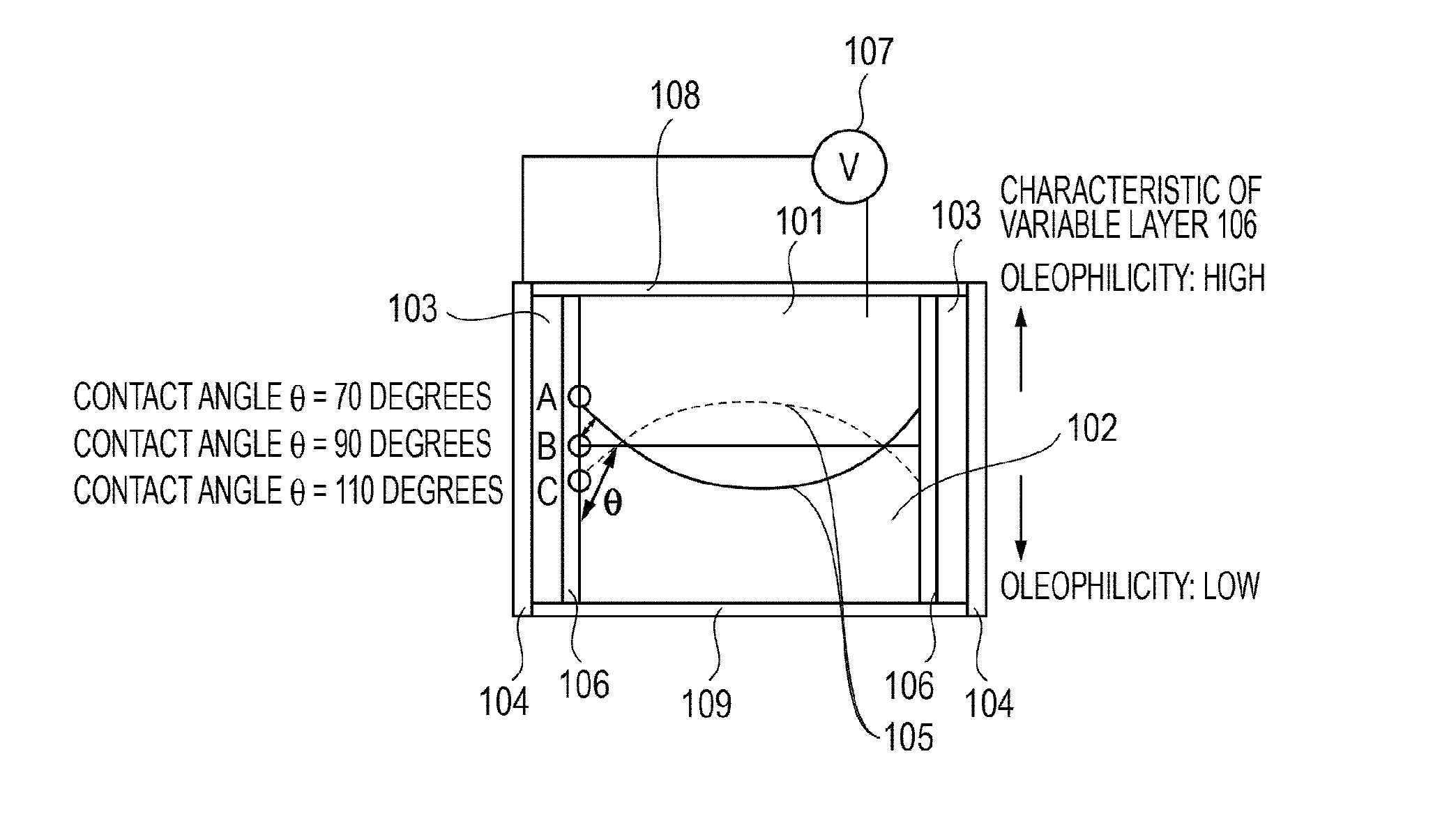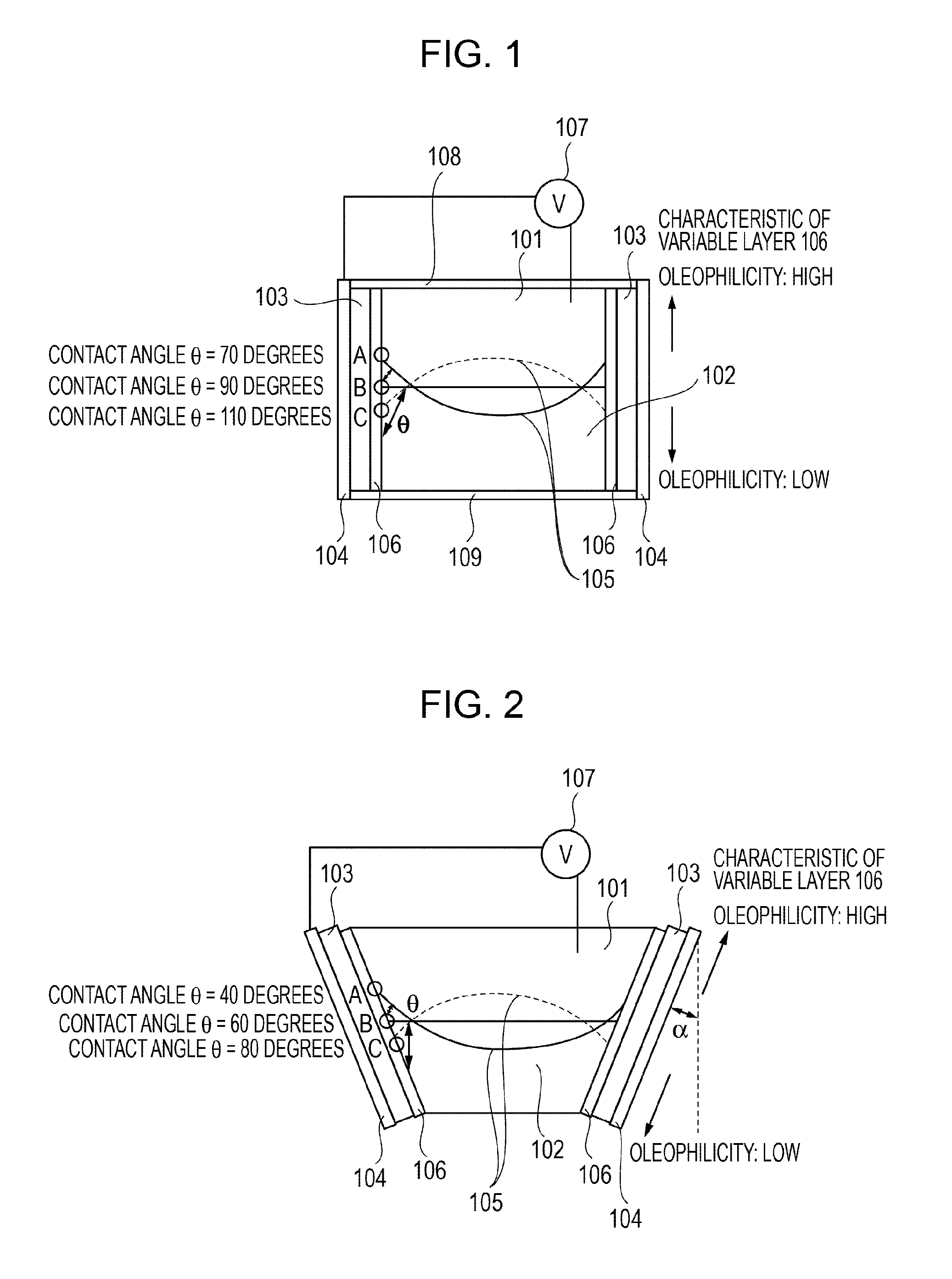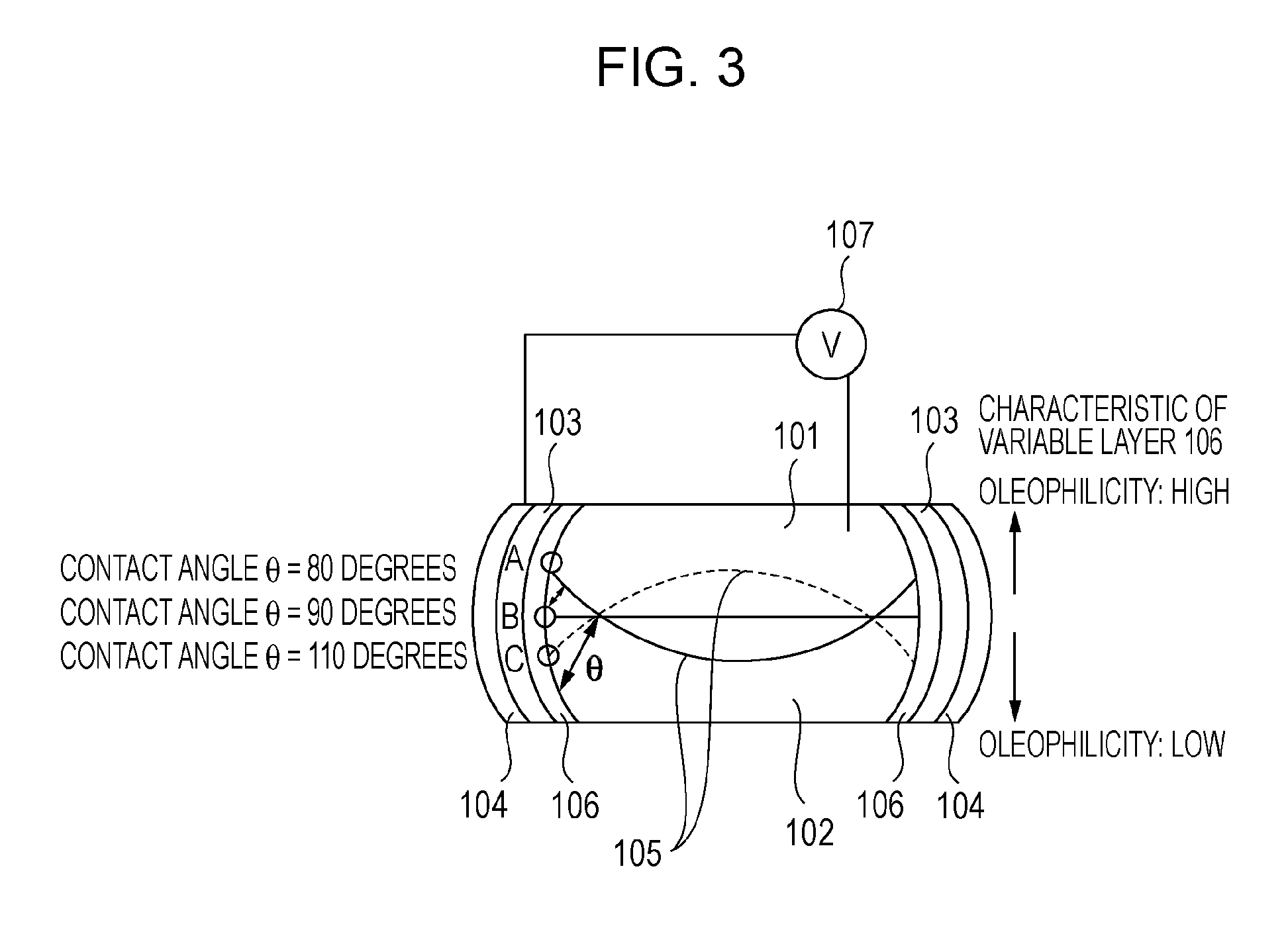Liquid lens and apparatus incorporating the same
a liquid lens and apparatus technology, applied in the field of liquid lenses, can solve the problems of impairing the optical performance of the entire lens unit, insufficient optical performance, etc., and achieve the effects of high sensitivity to voltage application, large change in refractive power, and high cost of manufactur
- Summary
- Abstract
- Description
- Claims
- Application Information
AI Technical Summary
Benefits of technology
Problems solved by technology
Method used
Image
Examples
second embodiment
[0117]FIG. 5A is a configuration diagram of the liquid lens according to the second embodiment (with a cylindrical electrode) and FIG. 5B is a V-θ characteristic graph. A V-θ characteristic table is given in Table 3.
[0118]The characteristic of a θ0 variable layer 106 will be described. Wettability of the θ0 variable layer 106 when an end of the interface 105 is situated closest to the electrolyte liquid 101 is 70 degrees (i.e., the initial contact angle θ0=θ00 at V=0). Wettability of the θ0 variable layer 106 when the end of the interface 105 is situated closest to the non-electrolyte liquid 102 (i.e., the contact angle θ0=θ0max at V=0) is increased to as large as 107.5 degrees (i.e., oleophobicity is increased). Wettability of the θ0 variable layer106 is changed linearly from 70 degrees to 107.5 degrees as represented by a θ0 curve in FIG. 5B. The thickness of the insulating layer 103 below the θ0 variable layer 106, the dielectric constant of the insulating layer 103 and the inter...
third embodiment
[0122]FIG. 6A is a configuration diagram of the liquid lens according to the third embodiment (with a cylindrical electrode) and FIG. 6B is a V-θ characteristic graph. A V-θ characteristic table is given in Table 4.
[0123]The characteristic of a θ0 variable layer 106 will be described. Wettability of the θ0 variable layer 106 when an end of the interface 105 is situated closest to the electrolyte liquid 101 is 70 degrees (i.e., the initial contact angle θ0=θ00 at V=0). Wettability of the θ0 variable layer 106 when the end of the interface 105 is situated closest to the non-electrolyte liquid 102 (i.e., the initial contact angle θ0=θ0max at V=0) is increased to as large as 115 degrees (i.e., oleophobicity is increased). Wettability of the θ0 variable layer 106 is changed linearly from 70 degrees to 115 degrees as represented by a θ0 curve in FIG. 5B. The thickness of the insulating layer 103 below the θ0 variable layer 106, the dielectric constant of the insulating layer 103 and the i...
fourth embodiment
[0128]FIG. 7A is a configuration diagram of the liquid lens according to the fourth embodiment (with a cylindrical electrode) and FIG. 7B is a V-θ characteristic graph. A V-θ characteristic table is given in Table 5.
[0129]The characteristic of a θ0 variable layer 106 will be described. Wettability of the θ0 variable layer 106 when an end of the interface 105 is situated closest to the electrolyte liquid 101 is 70 degrees (i.e., the initial contact angle θ0=θ00 at V=0). Wettability of the θ0 variable layer 106 when the end of the interface 105 is situated closest to the non-electrolyte liquid 102 (i.e., the initial contact angle θ0=θ0max at V=0) is increased to as large as 88.5 degrees (i.e., oleophobicity is increased). A change in wettability of the θ0 variable layer 106 differential monotonically increases from 70 degrees to 88.5 degrees as represented by a θ curve in FIG. 7B. The thickness of the insulating layer 103 below the θ0 variable layer 106, the dielectric constant of the...
PUM
 Login to View More
Login to View More Abstract
Description
Claims
Application Information
 Login to View More
Login to View More - R&D
- Intellectual Property
- Life Sciences
- Materials
- Tech Scout
- Unparalleled Data Quality
- Higher Quality Content
- 60% Fewer Hallucinations
Browse by: Latest US Patents, China's latest patents, Technical Efficacy Thesaurus, Application Domain, Technology Topic, Popular Technical Reports.
© 2025 PatSnap. All rights reserved.Legal|Privacy policy|Modern Slavery Act Transparency Statement|Sitemap|About US| Contact US: help@patsnap.com



